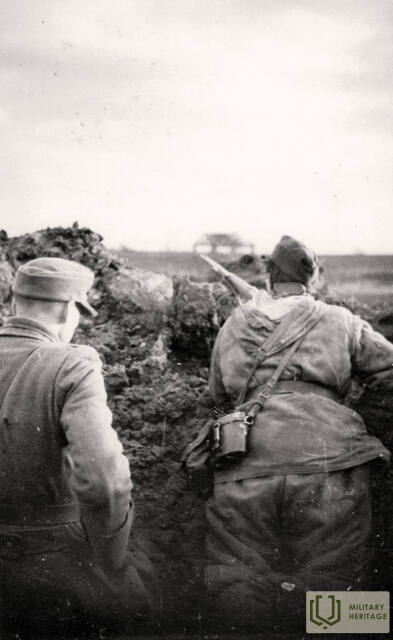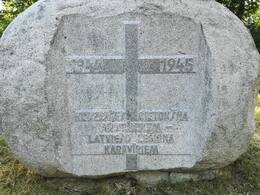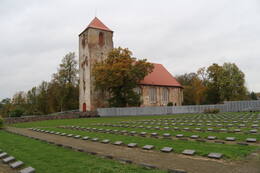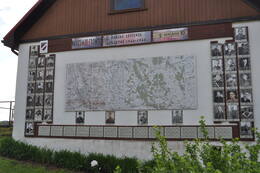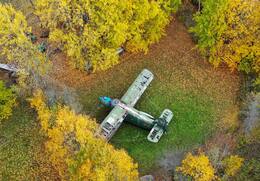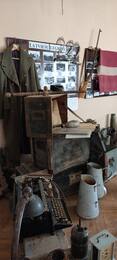Latviešu leģiona 42. pulka rotas komandiera Vernera Preijera atmiņas par Kurzemes kaujām.
Kurzemes cietoksnis izveidojās pēc Rīgas krišanas 1944. gada 13.oktobrī un krievu izlaušanās līdz Klaipēdai 10.oktobrī, tā pārtraucot satiksmi ar Vāciju pa zemes ceļu.
(..)Kaujas Kurzemē tik smagas un bieži vien neskaidros, sarežģītos apstākļos, ka vadot ikvienu kauju nācās improvizēt, bieži izejot uz risku, pretēji vispārpieņemtajiem kara principiem. Tas, kas derēja vienā kaujā, nederēja otrā. Strikts un nemainīgs palika tikai viens princips – tas ko sauc par karavīra morāli. Uz šī te principa tad arī turējās viss Kurzemes cietoksnis, bet mūsu deviņpadsmitā it īpaši, kā arī 106.grenadieru pulks protams. Kad es kā jauns puisis nonācu Latvijas armijā, tad tur starp daudz citām karavīra nepieciešamām īpašībām pirmajā vietā minēja tieši morāli un morālos spēkus. Pagāja kāds laiciņš līdz es pilnībā izpratu, ko šis īpašību komplekss īsti nozīmē. Šis jēdziens nav gluži tas pats, ko ar to saprot civilā dzīvē, vai arī tas, ko kapteinis Līdums vēlāk apzīmē par „šķīstu un kaunīgu” dzīvošanu, kā pretstatu tam minot, līdzīgu dzīvošanu, rīšanu, plītēšanu un miesas kārības. (..)
(..)Mums jau labu laiku bija noteikts stingrs munīcijas limits – 5 patronas uz ložmetēja. Taču katram ložmetējniekam labi zināms, ka ar 5 patronām grūti pārbaudīt vai ložmetējs darbojas, kā to mēdz darīt posteņiem mainoties. Tā jau nebija, ka mums kritiskiem brīžiem neglabātos munīcija. Nopietni virsnieki man stāstīja, ka vispār munīcijas Kurzemē pietiekot kādam mēnesim vai drusku ilgāk. Tomēr skaidrais saprāts liecināja, ka gals vairs nav tālu, kaut bijām nolēmuši kauties līdz beigām, tad jau redzēs. Sārumā ar vācu leitnantu iepriecināja vienīgi tas, ka viņš un jādomā arī citi tā paļaujas uz mums – latviešiem. Patiesībā tā jau arī bija uz ko paļauties un šo te 6.lielkauju, vienu no visgrūtākajām kaujām Kurzemē, kā jau to teicis pulkvežleitnants Kociņš jau arī uzvarējām mēs, pēdējie Kurzemes leģionāri, pēdējie no deviņpadsmitās.(..)
Saistītās laikalīnijas
Saistītie objekti
Piemiņas vieta Kurzemes cietokšņa aizstāvjiem pie Rumbām
Atrodas Tukuma novadā, autoceļa A9 malā, 500 m no pagrieziena uz Lesteni Rīgas virzienā.
Piemiņas vieta izveidota 1991. gadā Rumbu māju tuvumā, kuru apkārtnē noritēja aktīva karadarbība. Tas ir veltījums “Kurzemes cietokšņa” aizstāvjiem, kuri 2. pasaule karā cīnījās pret Sarkano armiju. Kaujas bija nozīmīgas, jo tās uz laiku apturēja Sarkanās armijas pilnīgu Latvijas okupāciju. Aptuveni 300 000 Latvijas iedzīvotāju emigrēja, izvairoties no Padomju režīma veiktajiem noziegumiem pret civiliedzīvotājiem.
2. pasaules kara beigās Latvijas teritorijā bija izveidojusies savdabīga situācija. Kurzemē atradās Vācijas armijas spēki, kurus Sarkanā armija centās likvidēt vai nepieļaut to iesaistīšanu kaujās Austrumprūsijā vai Berlīnes apkārtnē. “Kurzemes cietoksnis” – visbiežāk sastopamais apzīmējums, lai raksturotu karadarbību Kurzemē no 1944.gada līdz 1945.gadam. “Kurzemes lielkaujas” bija Vācijas armijas cīņas Sarkanās armijas vērienīgo uzbrukumu atvairīšanai. Kurzemes cietoksnis beidza pastāvēt īsi pēc Vācijas kapitulācijas.
Mūsdienās var aplūkot piemiņas un atpūtas vietu, kas kopš Latvijas neatkarības atjaunošanas bija populāra starp latviešu leģionāriem.
Lestenes Brāļu kapi
Atrodas Tukuma novadā, Lestenē, līdzās baznīcai.
Brāļu kapu izveide Lestenē aizsākās 1998. gadā. Tā ir otra lielākā karavīru kapsēta Latvijā, kur vienkopus apglabāti vairāk nekā 1300 latviešu leģionāri. Tikai pēc Latvijas Republikas atjaunošanas bija iespēja no dažādām vietām pārapbedīt 2. pasaules karā kritušos latviešu karavīrus.
Latviešu leģions bija Vācijas armijas kaujas vienība, kas formēta galvenokārt no pretlikumīgi mobilizētiem Latvijas iedzīvotājiem. Karavīri savu atrašanos leģionā uztvēra kā cīņu par Latvijas neatkarības atjaunošanu, neraugoties uz to, ka tā notika Vācijas bruņoto spēku rindās un Vācija bija okupējusi Latviju. Cita militāra spēka, kas varētu aizkavēt padomju okupācijas atgriešanos, nebija. Latviešu leģionāri cīnījās pret Sarkano armiju, kura bija likvidējusi Latvijas neatkarību, iznīcinājusi tās armiju un veikusi noziegumus pret civiliedzīvotājiem. Vācijas armijas rindās cīnījās ap 110 000–115 000 karavīru, apmēram 30 000–50 000 no viņiem savas dzīvības atstāja kauju laukos.
Mūsdienās Lestenē var aplūkot Brāļu kapus, kam līdzās atrodas Lestenes baznīca. Tā ir izcils baroka sakrālās mākslas piemērs. Senajā baznīcas krogā var iepazīties ar Latviešu leģiona vēsturei veltītu ekspozīciju. Brāļu kapu centrālo tēlu "Dzimtene - Māte - Latvija" veidojusi tēlniece Arta Dumpe. Netālu atrodas Lestenes muiža, kas pirms 2. pasaules kara piederēja Latvijas armijas ģenerālim Mārtiņam Hartmanim.
Ekskursijas Lestenes baznīcā var pieteikt pie Lestenes evanģēliski luteriskās baznīcas draudzes priekšnieces Ingunas Kokinas, tālrunis +371 29993743.
Lestenes brāļu kapu piemiņas istaba un bunkura ekspozīcija
Atrodas Tukuma novadā, Lestenē iepretim Lestenes baznīcai.
Piemiņas izstāde ir jauns tūrisma objekts, kas tapis pašiniciatīvas ceļā, lai izglītotu par 2. pasaules kara notikumiem “Kurzemes cietoksnī”. Ekspozīcijas galvenā uzmanība ir veltīta 3. Kurzemes lielkaujai jeb Ziemassvētku kaujām. Tas ir viens no dramatiskākajiem un interesantākajiem Eiropas militārās vēstures notikumiem.
2. pasaules kara beigās Latvijas teritorijā bija izveidojusies savdabīga situācija. Kurzemē atradās Vācijas armijas spēki, kurus Sarkanā armija centās likvidēt vai nepieļaut to iesaistīšanu kaujās Austrumprūsijā vai Berlīnes apkārtnē. “Kurzemes cietoksnis” – visbiežāk sastopamais apzīmējums, lai raksturotu kaujas Kurzemē no 1944.gada līdz 1945.gadam. “Kurzemes lielkaujas” bija Vācijas armijas karadarbība Sarkanās armijas vērienīgo uzbrukumu atvairīšanai. 3. Kurzemes lielkauja jeb Ziemassvētku kaujas norisinājās no 21. līdz 31. decembrim, kur aktīvi piedalījās arī latviešu leģionāri.
Mūsdienās var aplūkot izstādi, kas iekārtota Lestenes baznīcas vecajā krogā. Ekā ar ieeju no pagalma puses, Latviešu Virsnieku apvienības vīri kapteiņa Jāņa Slaidiņa vadībā ierīkoja zemzemes bunkuru, kādi reiz ierakumos tika būvēti, piemēram, pirms Ziemassvētku kaujām. Bunkurā atrodas pašu taisīta krāsns no vācu benzīna mucas, lāvas, 3 manekeni, kas ieģērbti leģionāru formās, autentiski ieroči un sadzīves priekšmeti.
Līdzās atrodas latviešu leģionāru Brāļu kapi un Lestenes baznīca, kurā savulaik bija ievainoto leģionāru lazarete.
Ekskursijas Lestenes baznīcā var pieteikt pie Lestenes evanģēliski luteriskās baznīcas draudzes priekšnieces Ingunas Kokinas, tālrunis +371 29993743 (ieeja par ziedojumiem).
Iespējams pieteikt pārgājienus pa kauju norises vietām ar Latvijas Virsnieku apvienības kapteini Jāni Slaidiņu, tālr.: +371 26522079.




